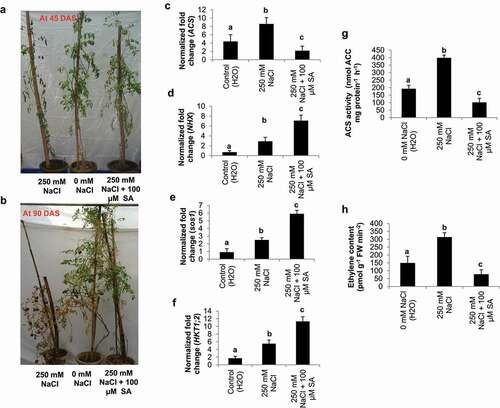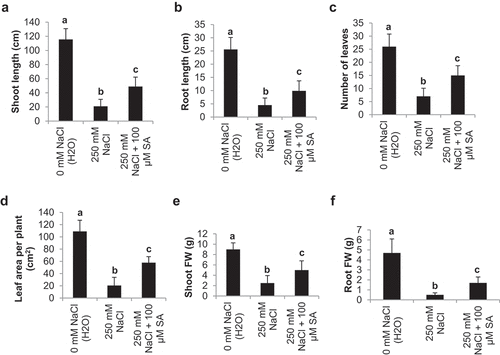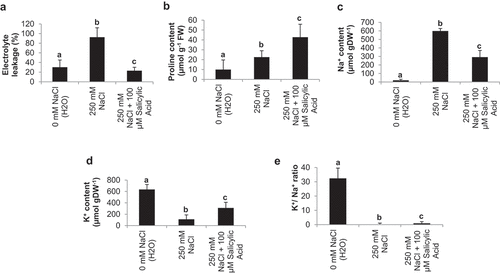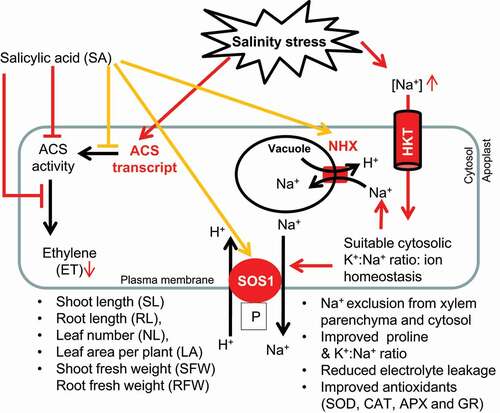Figures & data
Figure 1. Response of tomato cv, Pusa Ruby plants to salinity stress (250 mM NaCl) and salicylic acid (100 µM SA) treatments as compared to control (H2O) at 45 and 90 DAS (a-b). The endogenous transcript levels of ACS2, NHX1, sos1 and HKT1;2 (c-f), ACC synthase enzyme activity (pmol ACC mg protein−1 h−1) (g) and ethylene content (pmol g−1 FW min−2) (h) in treated and untreated tomato cv, Pusa Ruby plants at 45 DAS as compared to control (H2O)

Figure 2. Effect of salinity stress (250 mM NaCl) and salicylic acid (100 µM SA) on shoot length (SL) (a), root length (RL) (b), number of leaves (LN) (c), leaf area per plant (LA) (d), shoot fresh weight (SFW) (e) and root fresh weight (RFW) (g) in tomato cv, Pusa Ruby at 45 DAS as compared to control (H2O)

Figure 3. Effect of salinity stress (250 mM NaCl) and salicylic acid (100 µM SA) on electrolyte leakage (a), endogenous proline content (b), endogenous Na+ content (c), endogenous K+ content (d) and Ration of K+/Na+ (e) in tomato cv, Pusa Ruby at 45 DAS as compared to control (H2O)

Figure 4. Effect of salinity stress (250 mM NaCl) and salicylic acid (100 µM SA) on antioxidants enzymes- SOD (a), CAT (b), APX (c) and GR (d) in tomato cv, Pusa Ruby at 45 DAS as compared to control (H2O)

Figure 5. A tentative model of novel insight into plant salinity stress tolerance mechanisms mediated through cross talk between SA and ET to regulate ACS, NHX, sos1 and HKT1;2 genes expression, and thereby improved proline and K+ ions content, and K+/Na+ and antioxidants enzymes, and improved productivity

